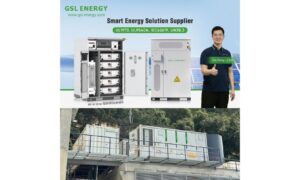Saving energy at home is at the forefront of everyone’s mind. Josco green energy suggests the following changes to make a difference.
1) Appliances
This may sound like a no-brainer, but shut off appliances when they are not in use.
Many of the appliances in your home have a ‘stand-by’ mode which will continue to drain energy while the appliance is not in use. These should be disconnected from their powerpoint
when they are not being used. Some appliances that typically have this feature include the TV, the microwave, and even many washing machines.
Buy appliances that feature a good energy rating.
The better their stars, the better their energy rating — but take some time to think about this first. Sometimes it is easier for a larger appliance that pulls more energy to be more ‘efficient’ in general energy usage. But because it is larger, it will still be consuming more energy.
Pick the right washing machine
Even though they are typically more costly at the beginning. You will find that the front-loaded type of washing machine is kinder to the environment and more energy efficient over time than the top0-loaded style of washing machine. This is because they use less detergent, water and energy than the other styles. Check out our guide to buying the best washing machine for your needs here.
Choose an energy-efficient fridge
Your fridge and freezer will be working non-stop and this is why it is imperative to your overall energy efficiency that these appliances are kept as energy efficient as possible. Fridges and freezers being sold in Australia must meet the Minimum Energy Performance Standards, so be sure to take time to look for a model that has an outstanding energy-efficiency rating. All fridges being sold in Australia are free of CFCs, so don’t base a purchase decision because you see an attractive ‘CFC-Free’ label.
2) Heating and cooling
Insulate the roof
One of the best ways to keep your home cool in the summer and warmer in the winter is to insulate your roof. This will cut back on the energy costs you use to keep your home cooled and warmed. Be sure to read our full-list of tips on how to keep your home cooled and warm.
Draught-proof your home
You can keep your home free of draughts by properly sealing the doors and windows. This can be done at a value price if you use draught excluders and window seals.
Seal your chimney with a damper
This is a great way to ensure that the hat from your home will not be escaping during the winter — so long as the fireplace is not being used. In the summer months it will keep the heat from outside from making its way into the house.
Switch to LED lights
LEDs are by far the most efficient type of lighting option you can find. You have probably already installed a variety of LEDs in your home as this impressive form of lighting has become fairly standard in recent years. But if you have any halogen lights in your home. You would do well to swap them out for LEDs as soon as possible. You may need to call in an electrician to make the swap completely as many of the LEDS will not work with the old drivers, or maybe they will work with old drivers, but they will work far better with the proper LED driver.
Downlights are built through ceiling and insulation which means they provide a point where heat can escape in cooler months and enter in the warmer months. This means that your energy-efficiency is affected even that much. If you are choosing to work with downlights, make sure they have an IC or IC-F rating because these can be properly covered with insulation. Other types of downlights should not be covered with insulation as this could start a fire.
Close all external windows and doors
Obviously, if you are running the air-conditioner or the heater you should consider closing the windows and doors.
Shade your windows
During the hot summer days, consider running a shade over the windows as this will stop the heat of the sun from entering your home.
Turn on the air conditioner early
If you are planning on using an air conditioner, plan to use it when you need it most. If you believe you will be experiencing an especially hot or humid day, turn the AC on earlier when it is cool so that your AC will not be working against the full heat of the midday sun. The same thing goes for keeping the house warm in the winter, it is easier to warm up the inside and then keep it warm by not allowing the warmth to escape. But, of course, this intelligent thinking will only work if you are keeping your home properly sealed and insulated, otherwise you are just running your AC and water for longer hours.
Many air conditioners can be controlled remotely via an app on your mobile device and this can be a great thing to have if you want to arrive at a cool home at night. But these apps also have the advantage of being able to shut off your AC if you have forgotten to shut it off before you left. You can also check and set the timer on your AC unit so you can be sure the AC has come on at the right time.
Install ceiling fans
Ceiling fans are far more energy efficient than an AC unit and much more environmentally friendly as well. And when the winter rolls around, the direction they rotate can be switched around so that they help to circulate the warm air through the room.
3) Transport
Even if you have an energy efficient car, do your best not to use it as often as possible. Whenever you can, it is best to leave the car at home and walk or use public transportation — never forget the benefits of car-pooling.
4) Water
Use rainwater
Collected rain water is the best option for watering your garden during days when it hasn’t rained. Call your local water authority for advice on how to set up your own rainwater tank.
Use greywater
Recycled grey water is another great option for storing in large tanks and for watering the garden or even flushing toilets. This is water that comes from your shower, sink or laundry tubs.
Buy a water-efficient shower head
Water efficient shower heads are a good option for keeping the amount of water being used to a bare minimum. If you have an instantaneous hot water system you will need to check with your supplier to make sure the low-flow shower head will allow the heater to start up. Furthermore, if you have a gravity-fed water system, you will want to make sure that the low-flow shower head will provide enough pressure to take a good shower.

































